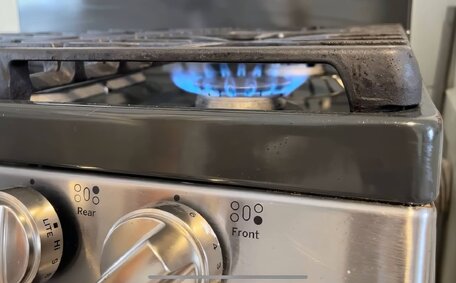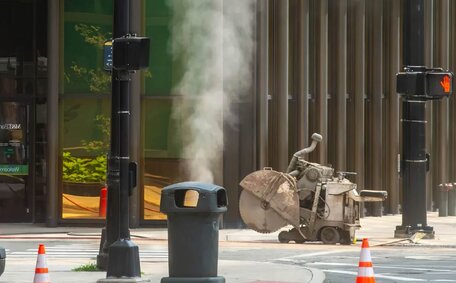What is carbon monoxide and why is it dangerous?
Carbon monoxide is a dangerous, odourless, colourless gas that can be lethal even in small concentrations. When appliances that burn fuel like natural gas, propane, oil, kerosene, or wood malfunction or are used improperly, carbon monoxide can leak into indoor air.
When inhaled, carbon monoxide bonds to haemoglobin in the bloodstream. This prevents oxygen from binding properly, leading to oxygen starvation in the body’s tissues. At high concentrations, carbon monoxide is poisonous and can cause nausea, dizziness, unconsciousness, and even death.
Some symptoms of carbon monoxide poisoning include headaches, dizziness, weakness, upset stomach, vomiting, chest pain, and confusion. However, because it is impossible to see, taste or smell, carbon monoxide can kill before any symptoms are noticed.
Installing carbon monoxide detectors on every level of the home can alert occupants of high levels before poisoning occurs. It is crucial to have fuel-burning appliances professionally installed and serviced regularly to prevent leaks. Allowing proper ventilation when using these appliances is also key to keeping carbon monoxide from accumulating to hazardous levels inside.
Health effects of carbon monoxide poisoning
Carbon monoxide poisoning, even at low levels over time, can have severe and potentially fatal health consequences. When inhaled, it reduces the blood’s ability to carry oxygen throughout the body. This oxygen deprivation can damage tissues and vital organs like the heart and brain.
Initial symptoms are often similar to the flu, including headaches, dizziness, weakness, fatigue, chest pain, confusion, and upset stomach. More severe poisoning causes vomiting, shortness of breath, blurred vision, loss of consciousness, and even death.
Long-term effects of carbon monoxide exposure can be serious as well. Survivors may suffer lasting neurological issues like dementia, movement disorders, vision and hearing problems. There is also an increased risk of heart disease from oxygen deprivation damage to the cardiovascular system.
Certain groups like unborn babies, infants, elderly and those with existing medical conditions are most vulnerable to carbon monoxide’s toxic effects. However, healthy individuals are not immune either, especially with prolonged exposure over time in the home or workplace.
The dangers of carbon monoxide poisoning underscore the importance of properly installed and maintained fuel-burning appliances, CO detectors on every level, and adequate ventilation. If poisoning is suspected, immediately get outside to fresh air and seek medical attention.
Which gas appliances can produce carbon monoxide
Many common household gas appliances carry the risk of leaking carbon monoxide if not properly installed, maintained, or ventilated.
Gas stoves and ovens, especially older models, can release carbon monoxide through their burners or pilot lights. Faulty seals and connections on these appliances allow for incomplete fuel combustion. This enables carbon monoxide to escape into the indoor air.
Malfunctioning gas water heaters and household central heating systems that run on natural gas can leak carbon monoxide through cracks or when flames are extinguished.
Portable propane or kerosene space heaters also pose a carbon monoxide danger if used indoors without adequate ventilation. These should never be operated inside homes, tents or partially enclosed spaces.
Gas dryers, fireplaces and furnaces are also potential sources of carbon monoxide leaks inside the home if not properly installed and maintained. Checking for proper venting is key for these appliances.
Regular professional service, proper venting and carbon monoxide detectors are crucial safety measures when using any gas-powered appliances. Poor maintenance, faulty parts and incomplete combustion enable carbon monoxide production that can quickly endanger health and safety.
Signs of carbon monoxide poisoning
Recognising the early signs of carbon monoxide exposure allows for swift action to avoid severe poisoning. Symptoms often mimic the flu, gradually worsening over prolonged exposure.
Headaches, dizziness, fatigue, nausea, vomiting, chest pain, and stomach upset can all indicate dangerous levels of carbon monoxide. More serious symptoms like blurred vision, shortness of breath, and seizures may arise as CO concentrations escalate.
Infants and small children are most vulnerable to the effects of carbon monoxide. Warning signs in children include excessive crying, lethargy, and loss of interest in toys or activities. Pets may also show symptoms before adults in the household.
The paradox of carbon monoxide poisoning is that those experiencing it are often the last to realise. Because the gas is invisible, tasteless and odourless, symptoms are often dismissed. This allows CO concentrations to rise to life-threatening levels before the source is discovered.
If carbon monoxide poisoning is suspected, immediately ventilate the area and evacuate the building. Call emergency services or seek medical help without delay. With prompt action, the damages of CO poisoning can be reversed.
Installing carbon monoxide detectors
Installing carbon monoxide detectors can save lives by alerting occupants to dangerous levels of the gas before poisoning occurs. Under Australian law, all residences with fuel-burning appliances must have CO alarms installed.
For maximum protection, alarms should be installed on every level and in every bedroom of the home. They should be placed near potential sources of CO like furnaces, gas stoves, and water heaters. Detectors are also recommended in common areas where people spend a lot of time.
Choose CO alarms that meet the Australian Standard AS/NZS 4268. Choose CO alarms that meet the Australian Standard AS/NZS 4268.
Hardwired, battery operated, and plug-in models are available. Test monthly and always follow manufacturer instructions.
Ideally, a licenced electrician should install your CO detectors. They can determine the optimal locations and properly connect hardwired alarms. Alternatively, handy homeowners can successfully install their own battery or plug-in CO alarms.
Regardless of the model, it is critical that carbon monoxide detectors are installed correctly. They provide an invaluable, often lifesaving alarm to alert families of accumulating carbon monoxide before it reaches dangerous levels in the home.
Proper ventilation for gas appliances
Proper ventilation is crucial when operating gas appliances to prevent dangerous carbon monoxide from accumulating indoors.
Always open windows or doors when using gas stoves, ovens, furnaces and water heaters. This allows fresh air to enter and dilute any CO produced. Consider installing range hoods above gas stoves to improve ventilation.
Avoid using kitchen or bathroom ventilation fans when appliances are on, as they can draw combustion byproducts into living spaces. Fans are helpful once appliances are off.
Annual inspections by qualified technicians ensure appliances are vented outside properly. They can detect issues like leaks, cracked heat exchangers or vent blockages that allow CO to enter the home.
For portable propane or kerosene space heaters, only use them outdoors in well-ventilated areas. Never bring these units indoors or into enclosed spaces like tents or garages.
Following the manufacturer’s instructions for proper use and ventilation is also critical. Taking steps to allow adequate fresh air circulation reduces the risk of carbon monoxide accumulation from gas appliances.
Having gas appliances serviced and inspected
Having gas appliances in your home serviced and inspected by a qualified professional annually is crucial to prevent carbon monoxide leaks and poisoning. While many homeowners overlook this vital maintenance, it could save your life.
Over time, the seals, pipes, and exhaust systems in gas appliances can crack and develop faults through normal wear and tear. This allows carbon monoxide to leak into living spaces rather than venting outside properly. Only a trained technician has the expertise to detect issues and perform needed repairs.
During a service, the technician will thoroughly inspect all components of appliances like your gas heater, stovetop, oven, water heater and more. They check for faulty parts, corrosion, blockages, and improper installations that could allow dangerous gas buildup. The appliances are tuned up to run safely and efficiently.
The technician will also examine venting, chimneys, and flues to ensure combustion byproducts like carbon monoxide escape outside. Checking for proper clearances around appliances and adequate air flow is key to preventing CO poisoning. Having detectors installed and tested is also standard practise.
While a yearly service may seem like an unnecessary expense, it is far cheaper than the costs of property damage, medical bills or the loss of life from carbon monoxide leaks. Your family’s safety is priceless, so make sure gas appliances are professionally inspected and serviced annually.
What to do if you suspect carbon monoxide poisoning
If you or someone in your household is experiencing symptoms of carbon monoxide poisoning such as headaches, dizziness, nausea or fatigue, it is crucial to act quickly and follow safety protocols.
First, immediately get fresh air. Evacuate the building and get everyone into the open air. Call 000 for emergency assistance if anyone is unconscious or unresponsive.
Do not re-enter the building even if symptoms diminish outside. Remain outdoors and get medical attention for anyone experiencing symptoms. Tell emergency responders that carbon monoxide poisoning is suspected.
If safe to do so, open doors and windows to ventilate the property while waiting for emergency services. Turn off any appliances you suspect may be leaking CO.
Do not operate any fuel-powered appliances again until they have been thoroughly inspected by a qualified professional. Have your gas heater, stovetop and any other gas appliances serviced to detect and repair the source of the leak.
Purchase CO alarms for each level of the home if you do not already have them. Make sure they meet Australian standards and are installed correctly by a licenced electrician.
Going forward, never ignore symptoms of CO poisoning. Allow for proper ventilation whenever using gas appliances, and avoid operating portable gas space heaters indoors.
Have all fuel-burning appliances serviced annually to prevent carbon monoxide leaks. If poisoning occurs again, evacuate immediately and call 000 for emergency help.
Stay vigilant about carbon monoxide risks in your home. If you ever suspect exposure, get fresh air and medical care right away – it could save your life.






